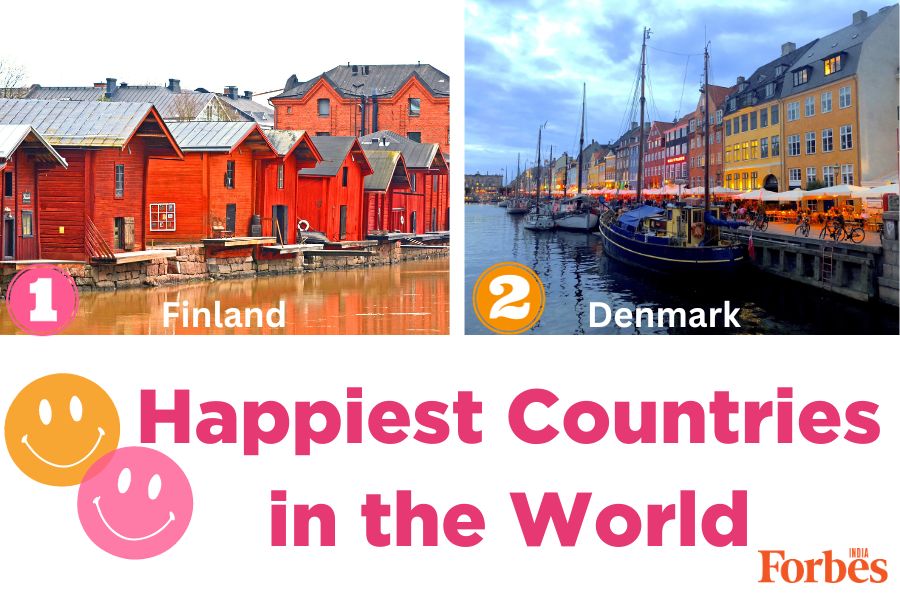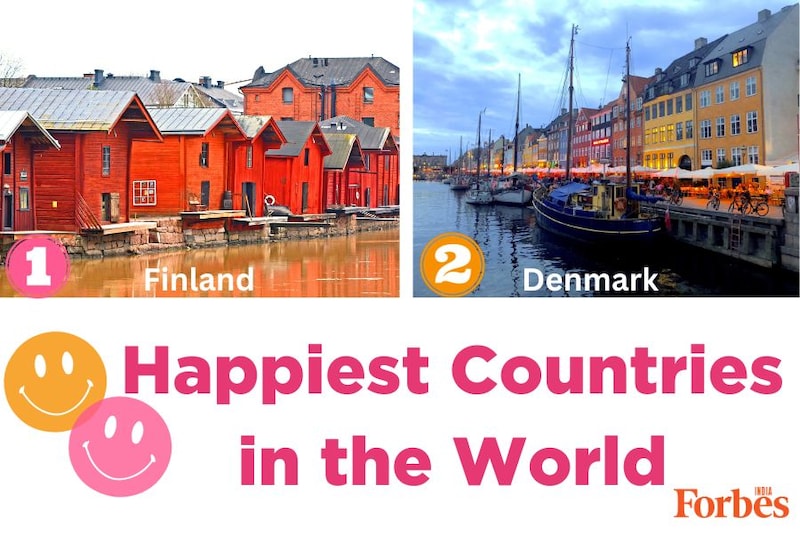
In a world filled with diverse cultures, landscapes, and traditions, pursuing happiness is a universal endeavour. We all yearn for joy, contentment, and well-being. The pursuit of happiness is not just a preference; it’s a fundamental part of being human. Estimating a country’s happiness provides valuable insights into the well-being of its citizens. It helps governments, policymakers, and organisations understand the factors that contribute to people’s contentment and identify areas that may need improvement. These rankings can influence the allocation of resources and the development of policies that promote the overall quality of life.
Additionally, the metric offers a broader perspective on a nation’s success, moving beyond economic indicators to consider the social and emotional aspects of its population. Bhutan, for example, has been a pioneer in valuing happiness more than economic development. It measures the Gross National Happiness of its citizens rather than relying on economic metrics to judge the country’s prosperity. Ultimately, measuring and ranking happiness is essential for creating a more holistic and people-centred approach to societal progress.So, which are the happiest countries in the world? What makes some nations consistently rank higher on happiness scales than others? Let’s find out.Also Read: Top 10 most peaceful countries in the world
20 happiest countries in the world in 2024
Let’s take a look at the top 20 happiest countries in the world in 2024, according to the World Happiness Report.
| Rank | Country | Happiness Score | Continent |
|---|---|---|---|
| 1 | Finland | 7.741 | Europe |
| 2 | Denmark | 7.583 | Europe |
| 3 | Iceland | 7.525 | Europe |
| 4 | Sweden | 7.344 | Europe |
| 5 | Israel | 7.341 | Asia |
| 6 | Netherlands | 7.319 | Europe |
| 7 | Norway | 7.302 | Europe |
| 8 | Luxembourg | 7.122 | Europe |
| 9 | Switzerland | 7.060 | Europe |
| 10 | Australia | 7.057 | Australia |
| 11 | New Zealand | 7.029 | Australia |
| 12 | Costa Rica | 6.955 | North America |
| 13 | Kuwait | 6.951 | Asia |
| 14 | Austria | 6.905 | Europe |
| 15 | Canada | 6.900 | North America |
| 16 | Belgium | 6.894 | Europe |
| 17 | Ireland | 6.838 | Europe |
| 18 | Czechia | 6.822 | Europe |
| 17 | Lithuania | 6.818 | Europe |
| 18 | United Kingdom | 6.749 | Europe |
India’s rank in happiness index
India is currently positioned at 126th place out of 146 countries with Happiness score of 4.054, according to the World Happiness Report, classifying it as one of the world’s least joyful nations. India’s rank in the happiness index is lower than its neighbouring countries like Nepal, Bangladesh, and China. This drop in happiness levels is closely linked to India’s escalating mental health crisis, which has been exacerbated by the challenges posed by the Covid-19 pandemic.Also Read: Visa on arrival countries for Indian passport holders in 2024
World Happiness Report: Methodology
The report of happiest countries in the world is a publication of the Sustainable Development Solutions Network, a global initiative of the United Nations. Each annual report is accessible to the public on the World Happiness Report website. The rankings of national happiness are derived from a global survey conducted by the polling company Gallup, Inc., known as the Cantril Ladder survey. In this survey, individuals are asked to envision a ladder, with a perfect life rated as ten and the worst possible life rated as 0. They are then asked to assess their current lives on this 0 to 10 scale. The report analyses these evaluations and correlates them with various life factors.The life factor variables employed in the report reflect determinants commonly associated with disparities in national-level life evaluations. However, some variables, such as unemployment and inequality, are excluded due to the unavailability of comparable data across all countries. The adoption of subjective measurements of well-being represents a bottom-up approach, empowering respondents to evaluate their well-being. The Cantril Ladder is valuable in this context as it allows respondents to anchor their assessment based on their perspectives.Also Read: Top 10 smallest countries in the world
In the report, experts from various fields, including economics, psychology, survey analysis, and national statistics, discuss how well-being measurements can effectively gauge a nation’s progress and address other related topics. Each report is structured into chapters that delve deeper into happiness-related issues, such as mental health, the tangible benefits of happiness, the role of ethics, policy implications, and connections to the Organization for Economic Co-operation and Development’s (OECD) approach to measuring subjective well-being, as well as other international and national initiatives.Starting in 2021, the World Happiness Report has argued for using WELLBYs (Well-Being-Adjusted Life-Years) as a superior measure. Quality-Adjusted Life Years (QALYs) primarily measure an individual’s health-related quality of life, while WELLBYs (Well-Being-Adjusted Life-Years) provide a broader assessment by considering overall well-being, emphasising not just health but the individual’s general life satisfaction and happiness.
Secrets of the happiest countries
Why do some countries routinely clinch the top positions in the World Happiness Report while others fail? When you look into what sets these happiest countries in the world apart from the rest of the world, several common themes emerge:
- Strong social support: The happiest countries in the world have robust social support systems, which include healthcare, education, and unemployment benefits. This safety net ensures that citizens can face life’s challenges with confidence.
- Freedom and trust: High levels of freedom and trust in government and fellow citizens contribute to a sense of security and well-being.
- Work-life balance: Most of the happiest countries in the world prioritise work-life balance, with shorter workweeks, longer paid vacations, and family-friendly policies.
- Connection to nature: Access to beautiful natural landscapes and outdoor activities often plays a role in the overall happiness of the population.
- Equality: Low levels of income inequality and a strong sense of social equality contribute to happiness.
Countries at the bottom
While exploring the happiest nations is inspiring, it’s also essential to understand the struggles faced by those at the bottom of the happiness scale. Countries like Congo, Zimbabwe, Sierra Leone, Lesotho, and Afghanistan rank at the bottom of the World Happiness Report. The reasons behind their lower ranking are:
- Ongoing conflict and instability: These countries are plagued by long-standing conflicts, civil wars, and political instability, which create an environment of fear, insecurity, and uncertainty, leading to lower levels of happiness among their populations.
- Economic challenges and political instability: Economic hardships, along with political instability, can result in reduced economic opportunities, poverty, and lack of basic services, all of which contribute to lower happiness levels.
- Lingering aftermath of a historical genocide: The trauma and social scars left by a historical genocide can have a long-lasting impact on a nation’s happiness, as the memory of such a traumatic event can affect social cohesion and well-being.
- Prolonged conflict, violence, and lack of essential services: Countries enduring ongoing conflict and violence often struggle to provide their citizens with necessities, including safety, education, and healthcare, leading to unhappiness.
- Economic struggles and limited access to education and healthcare: Economic challenges, coupled with limited access to education and healthcare, can lead to reduced opportunities and overall well-being for the population. These factors contribute to lower happiness levels in these nations.
